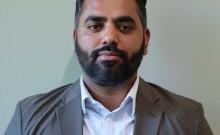
Hospitals have become digital lifelines, where seconds can determine survival. In that urgency, a cyberattack is more than a data breach-it's a disruption of care. Anjan Kumar Gundaboina, Senior Cloud Security and DevSecOps Architect at Optum, realized this when he built an AI-based defense system that predicted and neutralized threats before they could reachpatients.
From Reactive to Predictive Defense
Healthcare's dependence on cloud systems made it a target for ransomware and data theft. The traditional model, which detects breaches after they occur, was too slow. Gundaboina's work at Optum marked a significant shift toward predictive security, where attacks are intercepted in real-time.
"Cyberattacks on healthcare infrastructure, particularly ransomware, required a move from reactive monitoring to predictive, AI-driven threat detection," he said. "At Optum, I designed and deployed an AI-enhanced DevSecOps framework that combined machine learning with automated response playbooks."
The system was built within Optum's hybrid ecosystem, connecting AWS, Azure, GCP, and on-premises networks through a single continuous monitoring loop. Machine learning models analyzed access logs, API requests, and system telemetry, learning to identify subtle irregularities before they escalated into incidents.
A critical moment arose during an anomaly on a telemedicine platform. Unusual API calls triggered the system's defense pipeline. Within seconds, access tokens were revoked, Kubernetes pods were quarantined, and alerts were sent to response teams, all without human intervention. That automation prevented data theft and ensured uninterrupted remote consultations.
Teaching Systems to Think Like Defenders
What Gundaboina built went far beyond an automated firewall. His framework allowed machines to learn from every security event and react intelligently to new ones. Each incident became training data for a stronger future response.
He encoded human experience into machine logic by creating incident response playbooks, scripts that dictated what to do when breaches occurred. These playbooks automate critical containment steps such as rotating credentials, isolating compromised virtual machines, and initiating forensic captures. Every alert generated new knowledge; every containment improved the next defense.
The impact was measurable. Optum's mean time to detect (MTTD) dropped from hours to minutes. Mean time to respond (MTTR) fell from days to under an hour. These improvements ensured that clinical workflows, encompassing electronic health records, diagnostic imaging, and teleconsultations, remained online even during digital attacks.
His work didn't stop with detection. He was at the forefront of training predictive classifiers that could detect insider threats, unexplained access, or misuse of privilege by personnel that are often unnoticed by traditional systems. Instead of static credentials, these models learned the contextual behavior of users, marking interactions as highly risky before they became actual breaches.
The Human Stakes of Automation
For Gundaboina, automation isn't about replacing people but protecting them. Healthcare staff can't spend hours chasing false alerts when patients need attention. His systems reduce noise, isolate verified threats, and allow responders to focus on recovery rather than detection.
"The goal is simple," he said. "Protect patient data, protect patient care."
His framework has since influenced Optum's broader cloud strategy, embedding predictive DevSecOps principles into every deployment. By integrating security automation into continuous delivery pipelines, the company's healthcare platforms became more resilient without slowing clinical operations.
Gundaboina's contributions to research, published in IEEE and Scopus-indexed journals, further solidify his status as a global thought leader in predictive healthcare cybersecurity. His work bridges the gap between AI and DevSecOps, demonstrating the automation of prediction and neutralization of attacks at a speed surpassing that of any human response team.
Through these advances, Gundaboina turned incident response from a reactive scramble into a silent, predictive discipline. Each second saved represents more than just uptime; it represents uninterrupted care, secure patient trust, and a healthcare system prepared for the unseen.










